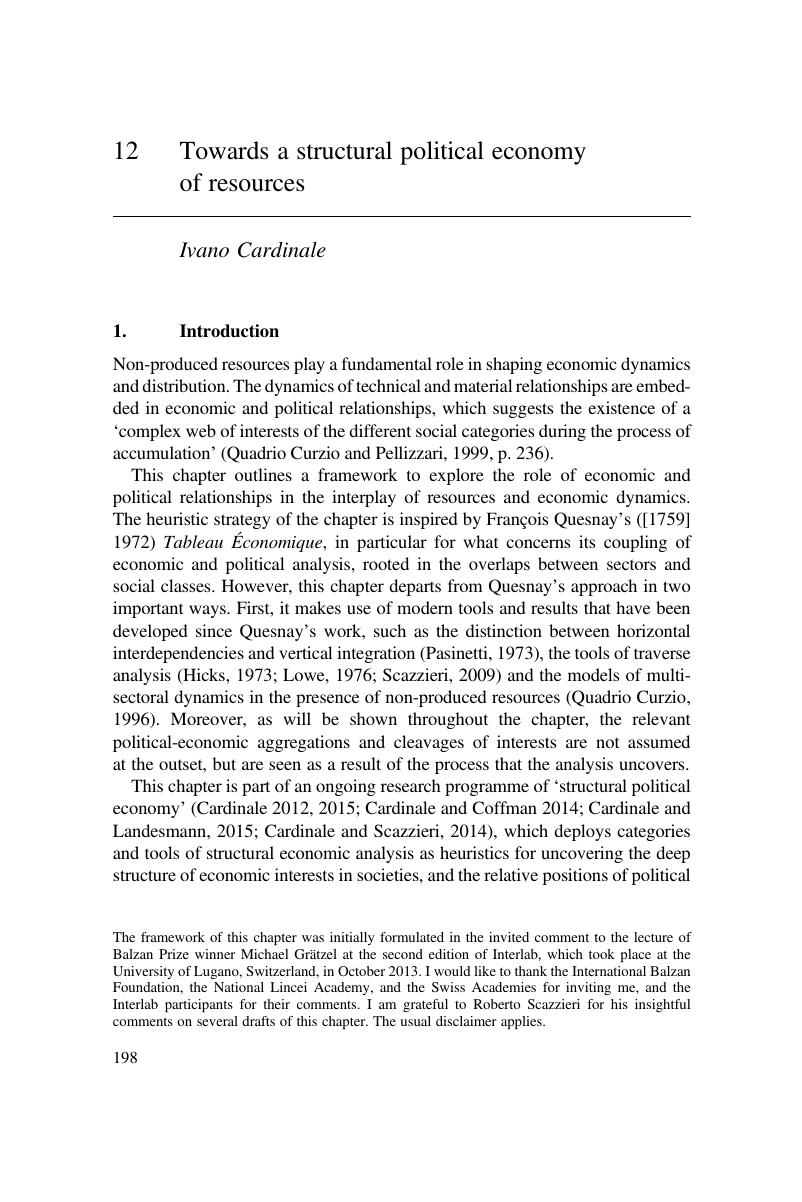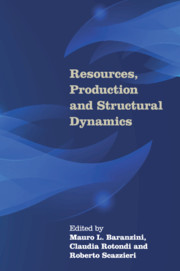Book contents
- Resources, Production and Structural Dynamics
- Resources, Production and Structural Dynamics
- Copyright page
- Dedication
- Contents
- Figures
- Tables
- Contributors
- Preface
- Book part
- 1 Resources, producibility and economic dynamics: a framework
- Part I Resources and distribution in a structural perspective
- Part II Structural dynamics: resources and multi-sectoral linkages
- 6 Limits,resources anddistributional trade-offs: structural constraints and opportunities
- 7 Producible resources and producibilityprices in a dynamic Leontief-typemodel
- 8 The transformative potential of input–outputeconomics for addressing criticalresource challenges of the twenty-first century
- 9 Capital mobility and natural resources dynamics: a classical-Keynesianperspective
- 10 The chimera of a complete analysis ofeconomicdynamics
- 11 Ricardian and Schumpeterian rents: fundamental ingredients for structural economic dynamics
- 12 Towards a structural political economy of resources
- Part III Resources, institutions and social structures
- Part IV Resources, industrial change and the structure of the world economy
- Part V Towards a political economy of resources and structural change
- Name Index
- Subject Index
- References
12 - Towards a structural political economy of resources
from Part II - Structural dynamics: resources and multi-sectoral linkages
Published online by Cambridge University Press: 05 May 2015
- Resources, Production and Structural Dynamics
- Resources, Production and Structural Dynamics
- Copyright page
- Dedication
- Contents
- Figures
- Tables
- Contributors
- Preface
- Book part
- 1 Resources, producibility and economic dynamics: a framework
- Part I Resources and distribution in a structural perspective
- Part II Structural dynamics: resources and multi-sectoral linkages
- 6 Limits,resources anddistributional trade-offs: structural constraints and opportunities
- 7 Producible resources and producibilityprices in a dynamic Leontief-typemodel
- 8 The transformative potential of input–outputeconomics for addressing criticalresource challenges of the twenty-first century
- 9 Capital mobility and natural resources dynamics: a classical-Keynesianperspective
- 10 The chimera of a complete analysis ofeconomicdynamics
- 11 Ricardian and Schumpeterian rents: fundamental ingredients for structural economic dynamics
- 12 Towards a structural political economy of resources
- Part III Resources, institutions and social structures
- Part IV Resources, industrial change and the structure of the world economy
- Part V Towards a political economy of resources and structural change
- Name Index
- Subject Index
- References
Summary

Information
- Type
- Chapter
- Information
- Resources, Production and Structural Dynamics , pp. 198 - 210Publisher: Cambridge University PressPrint publication year: 2015
References
Accessibility standard: Unknown
Why this information is here
This section outlines the accessibility features of this content - including support for screen readers, full keyboard navigation and high-contrast display options. This may not be relevant for you.Accessibility Information
- 8
- Cited by
